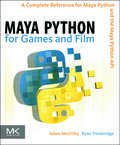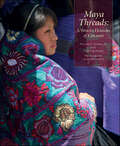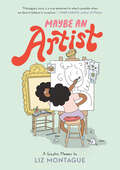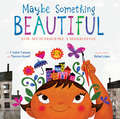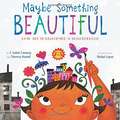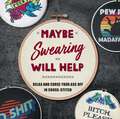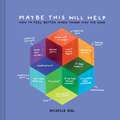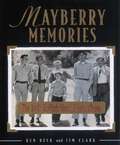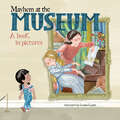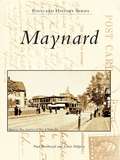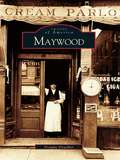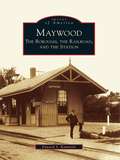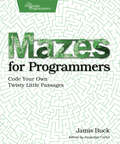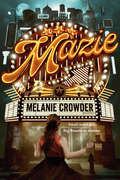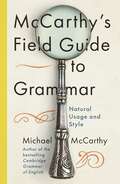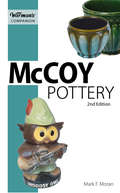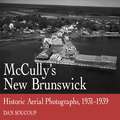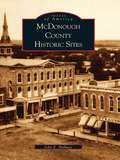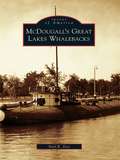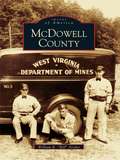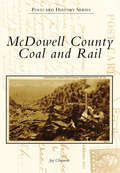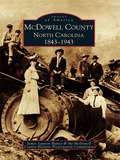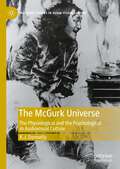- Table View
- List View
Maya Python for Games and Film: A Complete Reference for the Maya Python API
by Adam Mechtley Ryan TrowbridgeThis book is among the first books to provide an in-depth look at how to implement Python with Maya,. It is an ideal resource for technical artists looking to boost productivity and enhance performance and interoperability. With this practical guide written by trusted authorities in the field, experienced technical artists will make the transition from the older MEL scripting language to Python and aspiring artists will save themselves time right from the beginning.
Maya Threads: A Woven History of Chiapas
by Walter F. Morris Carol KarasikWinner of: IBPA 2016 Benjamin Franklin Gold Award, Multicultural Through the pages of this incredibly-researched history and photo gallery, the world of the Maya lives on through the lens of its culture and costume, still seen today in the state of Chiapas in southern Mexico. In a region battered by centuries of invasions, subjugations, civil wars, and severe economic hardship, the Maya continue to celebrate and sustain their heritage in extraordinary traditional dress and festivals that are both riotous and sacred. Their ever-evolving, colorful, beautifully-handcrafted dress features exquisite gauze fabrics that trace their origins from the 9th century AD to a present-day lowland village; festival wear that blends Roman Catholicism and paganism, reverence and mockery; gloriously brocaded and embroidered wardrobes that tie communities together; and embroidery techniques that reflect displacements and migrations—in other words, fabrics that trace the history and evolution of a people. Two Maya experts and a photographer painstakingly record the remnants of influence from the Aztecs, Spanish conquistadors, Catholic missionaries, and the unseen gods and spirits that guide Maya culture today.
Maybe An Artist, A Graphic Memoir
by Liz MontagueA heartfelt and funny graphic novel memoir from one of the first Black female cartoonists to be published in the New Yorker, when she was just 22 years old.When Liz Montague was a senior in college, she wrote to the New Yorker, asking them why they didn't publish more inclusive comics. The New Yorker wrote back asking if she could recommend any. She responded: yes, me. Those initial cartoons in the New Yorker led to this memoir of Liz's youth, from the age of five through college--how she navigated life in her predominantly white New Jersey town, overcame severe dyslexia through art, and found the confidence to pursue her passion. Funny and poignant, Liz captures the age-old adolescent questions of &“who am I?&” and &“what do I want to be?&” with pitch-perfect clarity and insight. This brilliant, laugh-out-loud graphic memoir offers a fresh perspective on life and social issues and proves that you don&’t need to be a dead white man to find success in art.
Maybe Something Beautiful: How Art Transformed a Neighborhood
by F. Isabel Campoy Rafael López Theresa HowellWhat good can a splash of color do in a community of gray? As Mira and her neighbors discover, more than you might ever imagine! Based on the true story of the Urban Art Trail in San Diego, California, Maybe Something Beautiful reveals how art can inspire transformation—and how even the smallest artists can accomplish something big. Pick up a paintbrush and join the celebration!
Maybe Something Beautiful: How Art Transformed A Neighborhood (Into Reading, Read Aloud Module 2 #2)
by Theresa Howell Rafael López F. CampoyNIMAC-sourced textbook <P><P>What good can a splash of color do in a community of gray? As Mira and her neighbors discover, more than you might ever imagine! Based on the true story of the Urban Art Trail in San Diego, California, Maybe Something Beautiful reveals how art can inspire transformation—and how even the smallest artists can accomplish something big. Pick up a paintbrush and join the celebration! <P><P>Lexile Measure: AD580L
Maybe Swearing Will Help: Relax and Curse Your Ass Off in Cross-Stitch
by Weldon OwenThere are times when just hollering obscenities won&’t do—you need to stab something. Now you can do both. Maybe Swearing Will Help combines two of the best stress-relievers—cursing, and cross stitch—into one of the most irreverently enjoyable crafting experiences you&’ll ever have. With 25 patterns from the crafting world&’s most bad-ass cross-stitch designers, this book has everything from a modern take on the traditional sampler to retro comic book designs, all with snarky to downright foul-mouthed phrases. It is definitely not your grandmother&’s cross stitch! No previous experience is required. In addition to simple instructions and clear, easy-to-follow patterns, the book includes a guide to basic lesson in cross-stitch techniques, so anyone can start swearin&’ and stabbin&’ right away. Whether you want the world to know that they need to wash their damn hands or you want to stitch a gift for your favorite potty mouth, Maybe Swearing Will Help has just what you need to find your way to inner f*cking peace. SWEARING AND STABBING: Get out your aggressions with a easy-to-make foul-mouth cross-stitch projects 25 PATTERNS: Choose from dozens of designs to send just the right message, from Bollocks to F*ck It FOR EVERY SKILL LEVEL: From beginning potty-mouths to expletive experts, Maybe Swearing Will Help includes complete patterns, step–by-step instructions, and a guide to cross-stitch basics TOP DESIGNERS: Patterns created by more than a dozen of the f*cking best-selling cross-stitch designers and influencers on Etsy INSPIRING IMAGES: Full-color images of the finished projects help ensure success and offer ideas of how to frame and display your beautiful damned artwork.
Maybe This Will Help: How to Feel Better When Things Stay the Same
by Michelle RialA visual pep talk of charts and essays on feeling better about not feeling better.Maybe This Will Help is one part the funny and relatable graphs that fans of Am I Overthinking This? and of Michelle Rial know and love, and one part the honest stories behind what makes those graphs so poignant. Michelle Rial brings to light her struggles with chronic pain, grief, and creative uncertainty in a way that reflects the universality of dealing with the unthinkable. Equal parts funny and moving, this book delves into the more serious side of things, finding levity and collective experience in the invisible difficulties that so many of us face. Through humorous charts and intimate peeks into the author's life, it explores the big things that can feel unmanageable and the everyday humor that keeps us moving forward.SELF-HELP WITH HUMOR: This book brings levity and laughter to serious topics without undermining the important message and relatability that makes it resonate.BELOVED AUTHOR: Michelle Rial's first book was beloved by her tens of thousands of fans as well as by the media, including Wired, Vulture, Book Riot—and the New Yorker even published her chart-based article on "Book Publishing by the Numbers."JUST THE RIGHT TONE: This book perfectly captures trying to figure out the "magic pill" that will fix things, struggling to find peace in how things are, and the humor in even the hardest times. It makes an ideal gift for someone struggling with physical or mental pain when you want to help but aren't sure how to.Perfect for: Fans of Michelle Rial's Instagram and first book, Am I Overthinking This?; people in their 20s and 30s grappling with big life changes or chronic illness
Maybe Your Leg Will Grow Back!: Looking on the Bright Side with Baby Animals
by Amanda McCall Ben SchwartzFinding the bright side of a terrible situation has never been easier, thanks to the adorable baby animal postcards found in Maybe Your Leg Will Grow Back. Amanda McCall and Ben Schwartz, nationally bestselling authors of Grandma’s Dead and Why is Daddy in a Dress?, are back with their third collection of cuteness designed to soften life’s unexpected blows, whether you’re dealing with shark attacks, incurable diseases, or incarcerations in filthy third world prisons. With delicious dark humor in vein of The Bunny Suicides, Maybe Your Leg Will Grow Back even includes a bonus DIY crafts section to help you find the sunny side of any catastrophe.
Mayberry Memories: The Andy Griffith Show Photo Album
by Jim ClarkMayberry Memories: The Andy Griffith Show Photo Album is the most beautiful coffee-table book ever to be released on one of the most beloved television shows in history. Celebrating the 40th anniversary of THE ANDY GRIFFITH SHOW, this book features nearly 300 beautifully reproduced photographs in both color and black and white, the majority of which have never before been published. MAYBERRY MEMORIES is the ultimate keepsake memento for fans who have enjoyed everything Mayberry for four decades.
Mayhem at the Museum: A Book in Pictures
by Luciano LozanoPaintings and sculptures come to life when a young girl visits the Metropolitan Museum of Art with her classmates. What starts as just another tour of the museum becomes a joyful parade as the art, which must not be touched, touches the young museum-goers in surprising ways.Images of works in New York's Metropolitan Museum of Art are beautifully illustrated as dynamic characters by Luciano Lozano Raya in this wordless picture book. Famous paintings and sculptures from throughout the museum will be recognizable to adults while the mischievous breaking of the fourth wall will delight younger readers.
Maynard
by Lewis Halprin Paul BoothroydMaynard was incorporated in 1871 as a manufacturing community. By 1880, it was one of the most influential towns in Massachusetts. As the population boomed from an expansion in business, postcards became the substantial method of communication. Local photographers took advantage of the events, pictorial venues, and influx of immigrants and visitors to create many unusual postcards of Maynard. Through vintage postcards, Maynard shows how this town, once a farming community, has retained its friendly, small-town character.
Maywood (Images of America)
by Douglas DeuchlerTen miles west of Chicago on the west bank of the Des Plaines River sits Maywood, a village that was founded in 1869 by seven New England businessmen who established the Maywood Land Company. This prairie community, carefully laid out along the railroad, experienced a population boom after the Great Chicago Fire of 1871. Soon industry arrived, followed by a variety of ethnic groups. Maywood was one of the few early suburban communities with an African-American neighborhood.
Maywood: The Borough, the Railroad, and the Station
by Edward S. KaminskiOriginally settled by Dutch farmers in the 1600s, the borough of Maywood experienced population and industrial growth in the late 1800s with the coming of the railroad. New Jersey Midland Railway, predecessor to the New York, Susquehanna and Western Railroad, arrived in 1872, a time when Maywood consisted mainly of farmland. Maywood was incorporated in 1894, when the railroad expanded into the Pennsylvania coalfields. The railroad provided the means for transportation of people, goods, and services, and Maywood grew measurably with it into the 20th century. Today the borough has developed into a suburb of such iconic cities as New York City, Paterson, Passaic, and Hackensack, while still retaining its character and charm.
Mazes for Programmers: Code Your Own Twisty Little Passages
by Jamis BuckUnlock the secrets to creating random mazes! Whether you're a game developer, an algorithm connoisseur, or simply in search of a new puzzle, you're about to level up. Learn algorithms to randomly generate mazes in a variety of shapes, sizes, and dimensions. Bend them into Moebius strips, fold them into cubes, and wrap them around spheres. Stretch them into other dimensions, squeeze them into arbitrary outlines, and tile them in a dizzying variety of ways. From twelve little algorithms, you'll discover a vast reservoir of ideas and inspiration.From video games to movies, mazes are ubiquitous. Explore a dozen algorithms for generating these puzzles randomly, from Binary Tree to Eller's, each copiously illustrated and accompanied by working implementations in Ruby. You'll learn their pros and cons, and how to choose the right one for the job.You'll start by learning six maze algorithms and transition from making mazes on paper to writing programs that generate and draw them. You'll be introduced to Dijkstra's algorithm and see how it can help solve, analyze, and visualize mazes. Part 2 shows you how to constrain your mazes to different shapes and outlines, such as text, circles, hex and triangle grids, and more. You'll learn techniques for culling dead-ends, and for making your passages weave over and under each other. Part 3 looks at six more algorithms, taking it all to the next level. You'll learn how to build your mazes in multiple dimensions, and even on curved surfaces.Through it all, you'll discover yourself brimming with ideas, the best medicine for programmer's block, burn-out, and the grayest of days. By the time you're done, you'll be energized and full of maze-related possibilities!What You Need:The example code requires version 2 of the Ruby programming language. Some examples depend on the ChunkyPNG library to generate PNG images, and one chapter uses POV-Ray version 3.7 to render 3D graphics.
Mazie
by Melanie Crowder*"Deserves a standing ovation." --Kirkus Reviews (starred review) *"The peppy first-person narrative keeps the story zipping along, and adroitly placed period details make the setting come alive in this bighearted, exuberant novel." --Publishers Weekly (starred review) An eighteen-year-old aspiring actress trades in starry Nebraska skies for the bright lights of 1950s Broadway in this show-stopping novel from award-winning author Melanie Crowder. Mazie has always longed to be on Broadway. But growing up in her small Nebraska town, that always seemed like an impossible dream. So when an opportunity presents itself to spend six weeks auditioning, Mazie jumps at the chance, leaving behind everything--and everyone--she's ever known.New York City is a shock to the senses: thrilling, but lonely. Auditions are brutal. Mazie's homesick and she misses the boyfriend whose heart she broke when she left. Nothing is as she expected.With money running out, and faced with too many rejections to count, Mazie is more determined than ever to land a role. But when she discovers that booking a job might mean losing sight of herself, everything Mazie always thought she wanted is called into question. Mazie is the story of a girl caught between two lives--and two loves--as she navigates who she is, what matters most, and the cost of following her dream. Praise for Mazie: "Entertaining and heartfelt."-- Booklist "Mazie&’s authenticity makes this novel stand out. Recommended for all collections, especially where theater is popular."– School Library Journal
McCarthy's Field Guide to Grammar: Natural English Usage and Style
by Michael McCarthyYou ain't gonna like it: bad grammar's not so bad. - The TimesRemember all those grammar rules from school? No? Most of us don't. Mike McCarthy, renowned corpus linguist and co-author of the 900-page Cambridge Grammar of English answers the awkward questions that regularly bother us about English grammar. In this helpful A-Z field guide, McCarthy tells us what the conventional rules are as well as shows us what people are writing or saying now and gives simple reasons why you might choose one or the other so that you can speak and write with confidence.Through witty and entertaining examples pulled from 50 years of teaching, 40 years of field notes picked from books, newspapers, letters, radio and TV, etc., and shamelessly eavesdropping on people's conversations in public spaces, and a British and American English computer database, McCarthy has created a book to browse and enjoy, as well as a useful reference to keep on your bookshelf.Why a Field Guide to grammar?- A to Z format makes it easy to access and to find what you're looking for- Presents solutions to a host of common, everyday grammatical problems- References current events to bring relevance to the grammar (fronted adverbials anyone?)- Looks at historical usage to illustrate how the English language has evolved, and continues to evolve- Gives guidance on appropriate usage where more than one way of saying something exists- Distinguishes between spoken and written grammar where appropriate- includes advice on vocabulary, spelling, pronunciation, punctuation and style- Compares North American and British grammar, and includes Englishes from around the world- Charming drawings to illustrate the playfulness in the English language- Grammar guide backed by data and researchTrue to the Chambers name, this field guide is as much quirky as it is informative. It is the perfect gift for any language lover, student, teacher, struggling parent or carer supporting their child's schooling, the grammar purist or the grammar descriptivist.
McCarthy's Field Guide to Grammar: Natural English Usage and Style
by Michael McCarthyYou ain't gonna like it: bad grammar's not so bad. - The TimesRemember all those grammar rules from school? No? Most of us don't. Mike McCarthy, renowned corpus linguist and co-author of the 900-page Cambridge Grammar of English answers the awkward questions that regularly bother us about English grammar. In this helpful A-Z field guide, McCarthy tells us what the conventional rules are as well as shows us what people are writing or saying now and gives simple reasons why you might choose one or the other so that you can speak and write with confidence.Through witty and entertaining examples pulled from 50 years of teaching, 40 years of field notes picked from books, newspapers, letters, radio and TV, etc., and shamelessly eavesdropping on people's conversations in public spaces, and a British and American English computer database, McCarthy has created a book to browse and enjoy, as well as a useful reference to keep on your bookshelf.Why a Field Guide to grammar?- A to Z format makes it easy to access and to find what you're looking for- Presents solutions to a host of common, everyday grammatical problems- References current events to bring relevance to the grammar (fronted adverbials anyone?)- Looks at historical usage to illustrate how the English language has evolved, and continues to evolve- Gives guidance on appropriate usage where more than one way of saying something exists- Distinguishes between spoken and written grammar where appropriate- includes advice on vocabulary, spelling, pronunciation, punctuation and style- Compares North American and British grammar, and includes Englishes from around the world- Charming drawings to illustrate the playfulness in the English language- Grammar guide backed by data and researchTrue to the Chambers name, this field guide is as much quirky as it is informative. It is the perfect gift for any language lover, student, teacher, struggling parent or carer supporting their child's schooling, the grammar purist or the grammar descriptivist.
McCoy Pottery, Warman's Companion (Warman's Companion)
by Mark F. MoranThis edition of McCoy contains essential identifying details and descriptions for everything from McCoy-made cookie jars and crocks to planters, vases and flower pots. The compact size provides access to facts and photos for inspection during auctions, shows, estate sales, flea markets, without being too cumbersome to tote. Inside the pages of this go-to-guide is an impressive collection of vibrant color photos, updated prices, makers marks, company history, and market trends.
McCully's New Brunswick: Photographs From the Air, 1931-1939
by Dan SoucoupDuring the Great Depression, promoter, salesman, and pilot Richard Thorne McCully became an aviation pioneer, capturing much of the Maritime region from the air. Along with photographer Harold Reid and pilot Marty Fraser, McCully spent the early 1930s flying over Atlantic Canada. The photographs they took offer a rare glimpse into prominent homes, vibrant businesses, churches, farms and waterfronts that are no longer standing or have been significantly altered. Each photo has been annotated with the natural features, architecture, streetscapes, industries, sporting events and other pastimes, and colourful characters depicted.These unique bird’s-eye views from 1931 to 1939 capture the feeling of that first day in May 1931 when McCully’s small twin-engine took off from the tiny Moncton airport.
McDonough County Historic Sites
by John E. HallwasMcDonough County Historic Sites depicts a remarkable agricultural region steeped in 19th-century tradition and community spirit. Originally set aside by Congress for veterans of the War of 1812 as part of the Illinois Military Tract, the land that is now McDonough County was settled by a diverse and ambitious population starting in the 1820s. From the trials of settlement to the coming of railroads and the establishment of small-town culture, McDonough County history reflects developments that have shaped America. The region's cemeteries, businesses, and homes that have endured-or vanished-offer stories of human endeavor that unite the people of the county to this day. The maps accompanying the chapters locate the county's many historic sites, such as the hotel in Macomb where Lincoln stayed during his 1858 campaign, the Prairie City Drugstore that launched a national poetry publishing company, and the remote village of Vishnu Springs that is now a ghost town. The historic images illustrate McDonough County's progress and controversy, small-town life and rural development, as well as religious diversity and cultural achievement.
McDougall’s Great Lakes Whalebacks
by Neel R. ZossDuring the last years of the 19th century, the Duluth Harbor, situated between the sister cities of Duluth, Minnesota, and Superior, was the birthplace of a bold and innovative and decidedly odd-looking class of Great Lakes barges and steamships known as whalebacks. Capt. Alexander McDougall and his American Steel Barge Company built the curved-decked, snout-nosed whalebacks on the shores of the harbor, first at Duluth's Rice's Point and later in Howard's Pocket at Superior. The vessels were a radical departure, in design, form, and construction,from the standard shipbuilding concepts of the era but proved themselves more than capable as a number of the boats sailed the Great Lakes and the seaboardsof America until the 1960s. All the whalebacks are gone now--either scrapped or sunk--with one exception. After sailing the lakes for more than 70 years, thelast whaleback, the SS Meteor, returned home to Superior in 1972 and is now continuing its service as a magnificent maritime museum on Barker's Island.
McDowell County
by William R. ArcherMcDowell County was established by an act of the Virginia General Assembly in 1858, two years before the start of the American Civil War. In 1863, the county was one of the 55 that separated from the Old Dominion to form West Virginia, thus earning the nickname "the Free State." Long before this, though, McDowell County was known for its bountiful natural resources; a great geologist, Dr. Thomas Walker, touted these vast "coal lands" after his 1748-1750 exploration. Political leaders like Thomas Jefferson, who knew of the county's mineral wealth, steered Robert Morris, financier of the American Revolution, to obtain all of McDowell County in the land speculation boom of the mid-1790s. After Morris was sent to debtor's prison in 1799, however, his land holdings were acquired by Michael Bouvier, a cabinet maker. In the 1920s, the remains of Bouvier's holdings were purchased by Henry Ford, the automobile tycoon. Other famous personalities associated with McDowell County include J.P. Morgan and Thomas "Stonewall" Jackson.
McDowell County Coal and Rail (Postcard History Series)
by Jay ChatmanCoal was discovered in McDowell County, located in the Billion Dollar Coalfield of southern West Virginia, in 1748, but it was not explored or mined until the early 1800s. Mill Creek Coal & Coke Company shipped the first railroad car of coal in March 1883 via the Norfolk & Western Railway. By the early 1900s, hundreds of mining companies dotted the county's landscape. The coal from McDowell County fueled the nation's home heating and steelmaking businesses and both world wars. As the coal industry developed, the local population grew; by 1950, the county had grown from a few hundred people to more than 100,000. The postcard images in this book show early coal mining and how it progressed throughout the years.
McDowell County, North Carolina 1843-1943
by James Lawton Haney McDowell County Historic Preservation CommissionMcDowell County is unique culturally and topographically. Formed by legislative action in 1842 from Burke and Rutherford Counties, McDowell's northern and western borders trace the towering heights and rugged terrain of the Blue Ridge, while its eastern and southern borders incorporate broad river bottoms and lower hills of the Piedmont. Showcasing more than 220 images, this volume is a mosaic of McDowell County's first century and covers the towns of Marion and Old Fort, as well as smaller communities like Brackettown, Crooked Creek, Dyartsville, Glenwood, Greenlee, Little Switzerland, Montford's Cove, Nebo, and North Cove. Views of waterfalls on the Catawba River and Tom's Creek, along with those of the eerie limestone formations of Linville Caverns, attest to nature's bounty. Aging photographs, many of which are published for the first time, draw attention to families, churches, schools, memorable personalities, and historic sites. This collection also brings to life the county's defining events: the arduous construction of two railways through the mountains, the destruction of Marion by fire in 1894, the disastrous flood of 1916, the textile strike of 1929, and the patriotic response by the citizenry to national crises. Photographs of selected homes, commercial sites, churches, and schools testify to the diverse architectural style and levels of economic and social well-being found in the county.
The McGurk Universe: The Physiological and the Psychological in Audiovisual Culture (Palgrave Studies in Audio-Visual Culture)
by K.J. DonnellyThis book reconsiders audiovisual culture through a focus on human perception, with recourse to ideas derived from recent neuroscience. It proceeds from the assumption that rather than simply working on a straightforward cognitive level audiovisual culture also functions more fundamentally on a physiological level, directly exploiting precise aspects of human perception. Vision and hearing are unified in a merged signal in the brain through being processed in the same areas. This is illustrated by the startling ‘McGurk Effect’, whereby the perception of spoken sound is changed by its accompanying image, and counterpart effects which demonstrate that what we see is affected by different sounds accompanying sounds. This blending of sound and images into a whole has become a universal aspect of culture, not only evident in films and television but also in video games and short Internet clips. Indeed, this aesthetic formation has become the dominant of this period. The McGurk Universe attends to how audiovisual culture engages with and mediates between physiological and psychological levels.
